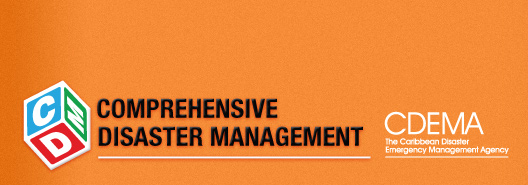|
The Operational Emergency Broadcast Plan
Occasionally there is time to prepare for a disaster, for example hurricane and flood warnings are sent up to 36 hours in advance. However, for many disasters like earthquakes and tsunamis, there isn’t time to plan. This is why it is so important that people are always ready for a disaster.
All media organisations need to have an Emergency Broadcast Plan which would ensure that staff know what to do during an emergency. You see, while many companies have the option of closing their doors during a disaster, the media needs to remain in contact with their audience.
This Emergency Broadcast Plan will include all those steps that have to be taken before an emergency to ensure that the organization is prepared for any event and it will also mention how the company intends to function during and after the disaster.
Below is a checklist which outlines what those in the media should do to prepare for a disaster:
- Identify the Emergency Broadcast Team leader.
- The most important member of your team is the team leader. This person is usually the CEO or Station Manager but it can be a senior member of staff. Whoever you choose, he/she should have a wide breadth of experience, be multi skilled, be known by all members of staff and capable of working under pressure. Most importantly, they should be someone who sustains the trust and confidence of team members.
The team leader makes the final decisions about all aspects of the broadcaster’s operations in emergency situations.
- Identify and appoint EBT members
- There will not always be enough time for you to create a specially designated Emergency Broadcast Team (EBT). It is important to ensure that all staff members have some training in and are familiar with emergency broadcast procedures.
The EBT represents a skeleton staff and because of this, many persons on the team may have to perform more than one job. To minimize this occurrence, media outlets can pool resources so that there will be enough people on these teams.
A number of factors such as levels of experience, availability, skills, competence and ability to work under pressure, will determine who is chosen to be on this team. How many persons are on this team depends on the available talent. Sometimes, there may need to be a “B” team – depending on how severe the disaster is – who will begin to work after the disaster has passed. This will also need to be prepared for.
Don’t ignore the personal and private concerns of employees when selecting team members. Family and/or other personal concerns may prevent an individual from being able to participate or perform at maximum efficiency.
- Locate the emergency broadcast facility (radio and television).
- The most secure studio available should be designated the emergency broadcast studio. This may or may not be the regular continuity studio.
- Identify (and acquire if necessary) emergency broadcast equipment.
- The equipment that will be used in emergency broadcasts should always be in good working condition. This means that the equipment will have to be maintained and tested before the disaster.
- Acquire and store securely emergency broadcast supplies.
- Emergency supplies should be on hand at all times and there needs to be enough for at least three days. What and how many supplies you have depends on the age, gender, diet and special needs of your team as well as the severity of the disaster. In order to avoid spoilage where likely, the supplies should be used up and replenished periodically.
- Develop a contingency broadcast plan.
- This is an important step in case the main plan cannot be activated during the emergency. If this happens, there needs to be a backup plan, so that the station will not go off air.
- Formalize a link with a partner facility.
- We cannot predict the impact a disaster will have. Your facilities could be badly damaged and unable to function after a disaster. Therefore, you must prepare yourself for the chance that you may not be able to provide service to the various publics locally and/or regionally. In that event it is important to be able to provide information to the affected population.
- Establish a secure link to the national disaster agency.
- Since this agency will be the main source of accurate information in an emergency, it is crucial to ensure access at all times.
- Orient the Emergency Broadcast Team (EBT).
- This really depends on the skills, experience and overall composition of the team but there may be the need for some additional training for personnel. In any event, it will require that you are certain all members of the EBT are fully familiar with the roles that they are expected to play as team members.
Testing the Plan
No matter how fool proof your plan seems, there is always the chance that whatever can go wrong, will. This is why we suggest testing the plan at least three times a year.
Regular simulation exercises are conducted by all CDEMA Participating States and provide an ideal opportunity for testing the Emergency Broadcast Plans in situations that replicate the real thing.
Also, this is a good opportunity to find out where loopholes and flaws occur in your plans that way, these can be quickly addressed and the appropriate modifications made before it’s too late.
Sensitizing the Public
Although the development of the Emergency Broadcast Plan is an internal matter, it will affect the public. The audience has a right to know what is going on and what to expect during emergencies.
The station must have an appropriate method of attracting and sustaining the public’s attention during an emergency. This could be an alert of a special jingle which would only be used during a disaster.
This signal should be broadcast at specified times outside of the emergency to familiarize the public with it. Followed by a message: “This is a test of our emergency broadcast signal. Were this a real emergency, you should keep listening or watching to your radio or television (tuned to this channel) and follow any instructions given. This is only a test.”
Activating the Plan
When events are predictable, like hurricanes, the declaration of emergency is done at a national level. Once a hurricane or storm warning has been issued, the Emergency Broadcast Team should be mobilized.
At this point, the Emergency Broadcast Team leader will assume full decision making responsibility for the broadcaster’s output. Members of the disaster team must be given enough time before a disaster to secure their own homes and belongings and to make sure that their loved ones will be safe.
The Emergency Broadcast Team must assume their roles 6 hours before the disaster strikes. They need to do this as quickly as possible because the longer they wait, the harder it could be to get to the facility because of road blockages etc.
Members of the EBT should work in shifts in order to conserve energy especially in prolonged disasters like hurricanes.
back to top
|












